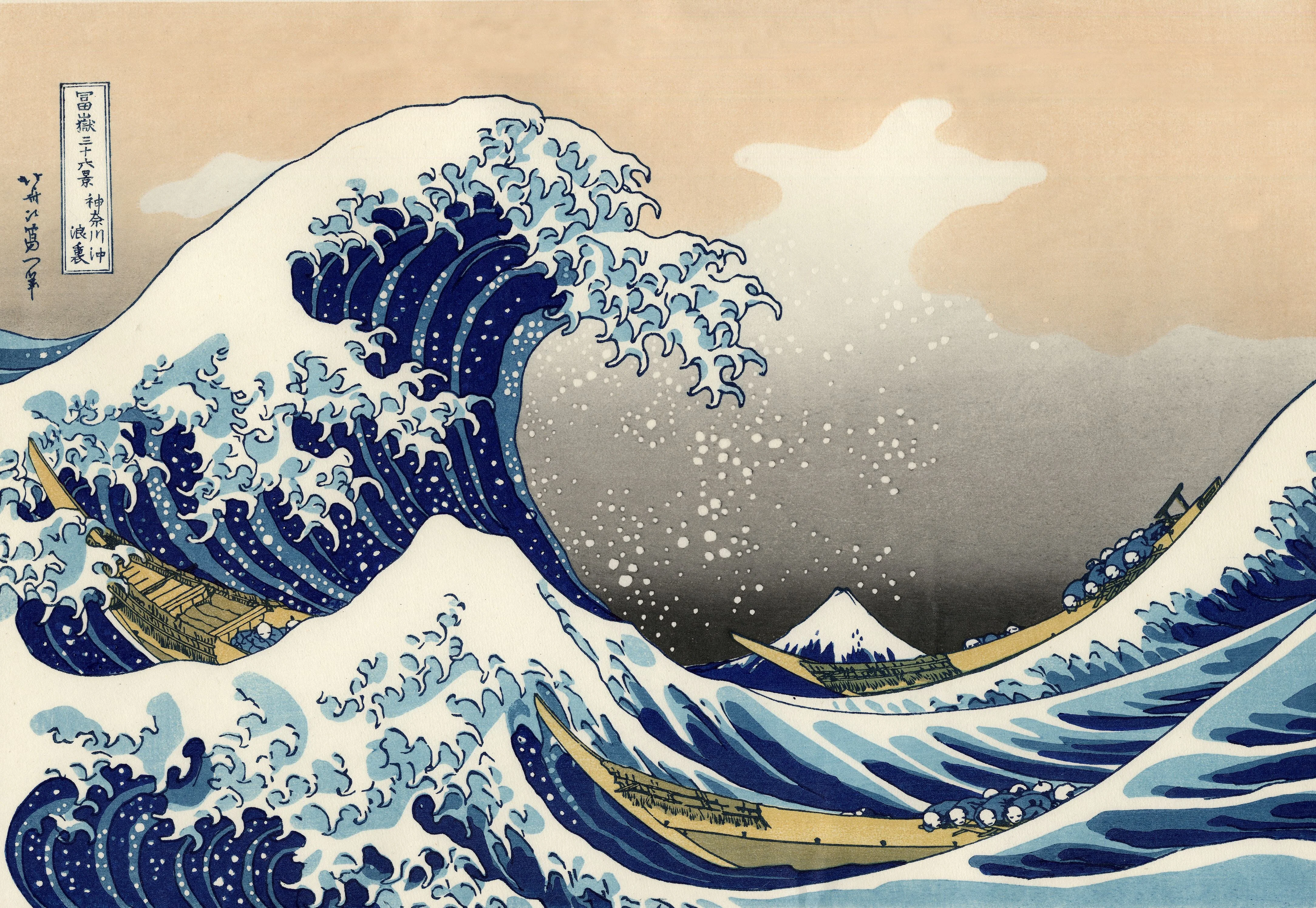THE GREAT WAVE OFF KANAGAWA
Art for the poor

Katsushika Hokusai. The Great Wave off Kanagawa. 1823-1831 / Wikimedia commons
First presented to the public in 1832
This woodblock print is the first and arguably the most renowned from the series "Thirty-Six Views of Mount Fuji," an undisputed masterpiece by the artist Katsushika Hokusai. Executed in the so-called "ukiyo-e" genre, it simultaneously represents a revolution in this art form.
Japanese visual art largely emerged from literature, serving as its natural continuation. Medieval Japanese people were not acquainted with paintings as we understand them; they rarely adorned walls with such art, except for carved images on the beams of Shinto shrines. However, they did decorate screens, fans, clothing, and household items. This decorative and applied art, in contrast to the global practice of that time, was not built on ornaments. More often, it depicted genre scenes, landscapes, dancing cranes, pines above mountain rivers, turtles on the seashore, and so on.
Drawing was a crucial element in the education of noble boys and girls, especially the latter. Social communication in Japanese high society largely consisted of abundant correspondence. Letters were exchanged for any occasion, and traditional Japanese letters almost invariably included not only news, greetings, and wishes but also poems. These were often adorned with fleeting drawings that stylistically matched the calligraphy chosen for the text.
Japanese books were scrolls fastened on two round rods—either wooden or stone. Reading a book involved gradually unrolling it, like a very slow film. Illustrations accompanying the narrative often occupied no less space than the text itself. Of course, aristocratic households primarily possessed books copied and adorned by skilled, well-known masters and mistresses. Usually, this task was highly esteemed, as copying books was considered a worthy pastime for ladies in their leisure.
However, even simpler and less affluent people were not averse to splurging for the pleasure of having an antique love story or a collection of poems at home. For such books, texts (occasionally) and illustrations (almost always) were printed using carved wooden blocks—drawings came out in black and white, later to be manually colored.
By the 16th century, during the emergence of ukiyo-e, this "art for the poor" truly became mass-produced, penetrating all layers of urban life. The most basic version now consisted of a simple piece of paper with a hand-colored imprint of an engraving and a few lines explaining what was happening in the picture. These picture-postcards-books on a single page later came to be called ukiyo-e. The "ukiyo-e" genre, especially "spring pictures," became very popular. These images portrayed love and eroticism and often featured rather explicit scenes. It was considered proper to gift "spring pictures" to newlyweds who faced challenges in having children. However, they gained the most popularity among courtesans, also known as "teahouse singers."
Entertaining guests with these prints and providing elaborate narratives about the depicted scenes became a specialized art, and courtesans dedicated serious efforts to mastering this skill.
The girls collected extensive collections of ukiyo-e, and the more refined and expensive the lady, the less pure erotica there was in her collection, and the more scenes from ancient novels, famous landscapes, and pictures from travels dominated. The word "ukiyo-e" itself means "pictures from the floating world," that is, from a world filled with elusive beauty and sadness—this is what quarters of lively establishments were conventionally referred to in Japan.
In 17th-19th century Japan, a plethora of renowned "ukiyo-e" artists emerged, with one master known by the pseudonym Katsushika Hokusai standing out as one of the most well-known despite being one of the latest. His prints are unique in that he introduced a sharp innovation into the ukiyo-e genre—including certain principles and techniques of European painting, which he studied purposefully and at length. For example, he actively used the hitherto unknown Berlin blue, which the Japanese, enamored with blue hues, immediately fell in love with (as seen in "The Great Wave off Kanagawa," which is almost entirely composed of various shades of Berlin blue). More importantly, Hokusai combined Japanese engraving principles with the Western idea of artistic perspective, which was practically unknown in Japan and was long perceived by the Japanese, discovering Western art as a dubious trick unrelated to true beauty and art.
The representation of the Great Mount Fuji in the print, as a small mound behind huge waves, was as unexpected for the Japanese public as the ukiyo-e style itself was a revelation for the Western audience. Hokusai and his album "Thirty-Six Views of Mount Fuji" became the calling card of a distant, unknown country for Europeans, giving rise to the fashion for "Japonism."
Of course, Europeans could not fully understand Hokusai. Tiny figures resembling shreds of foam cling to fragile boats in the futile hope of escaping the indifferent and magnificent elements. The mountain looming between the waves is the axis of the world, where everything is doomed to be born, suffer, and perish in the endless rotation of the wheel of existence. The Japanese saw "The Great Wave" as a lesson in humility and acceptance, while Europeans associated it with the will to live and courage. Nevertheless, this print became famous in both worlds.

Katsushika Hokusai. The Great Wave off Kanagawa. 1823-1831 / Wikimedia commons



